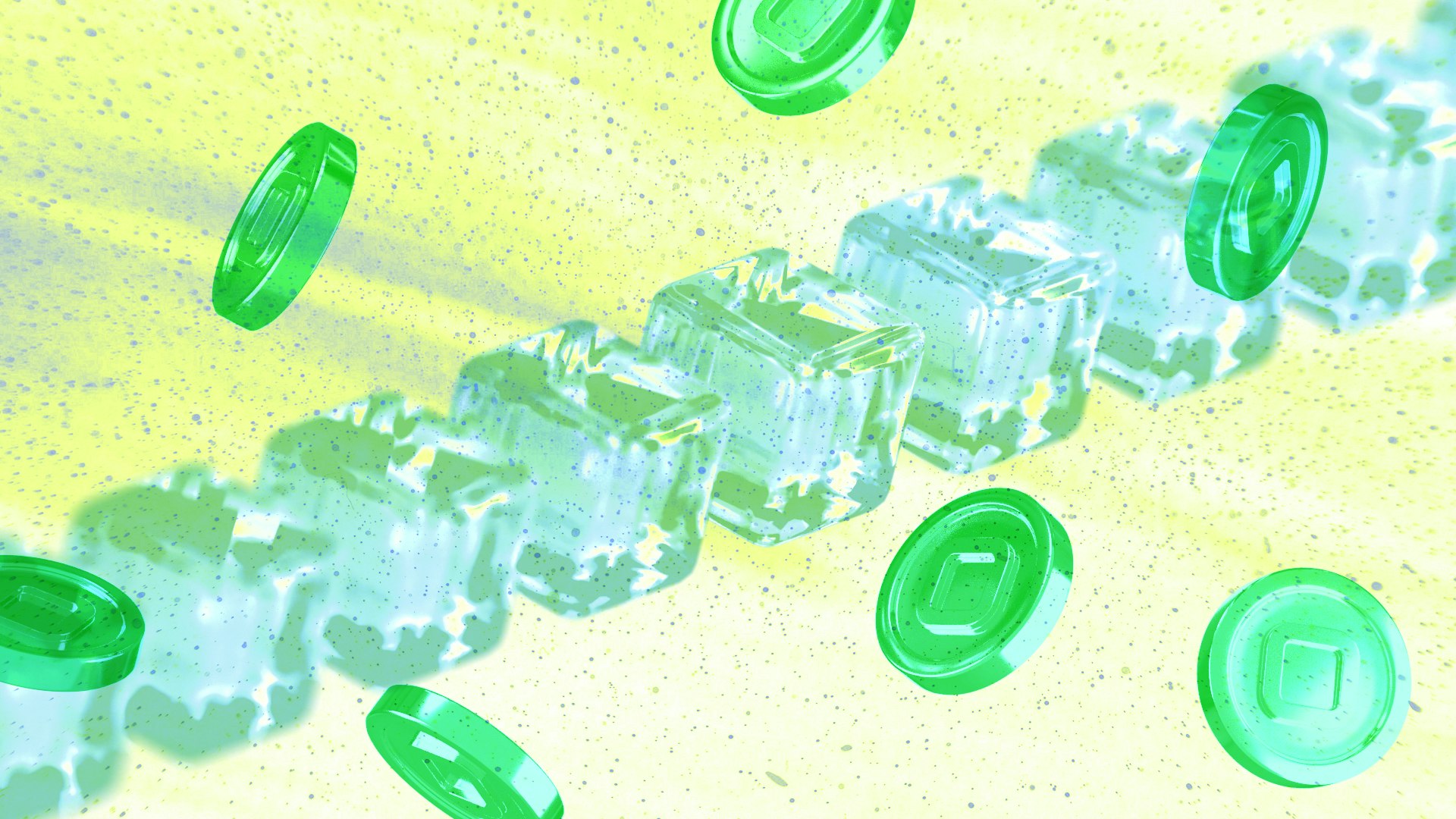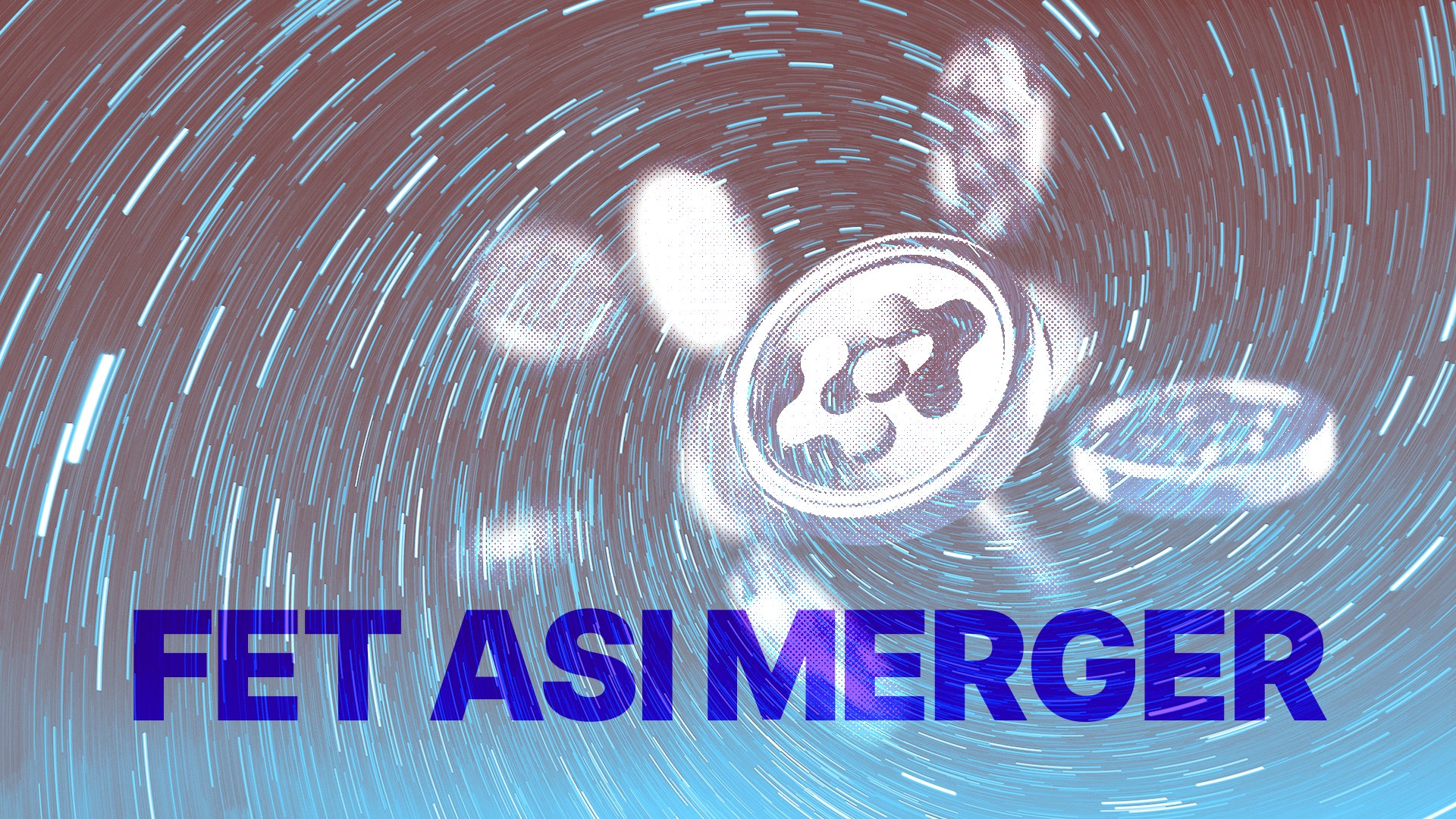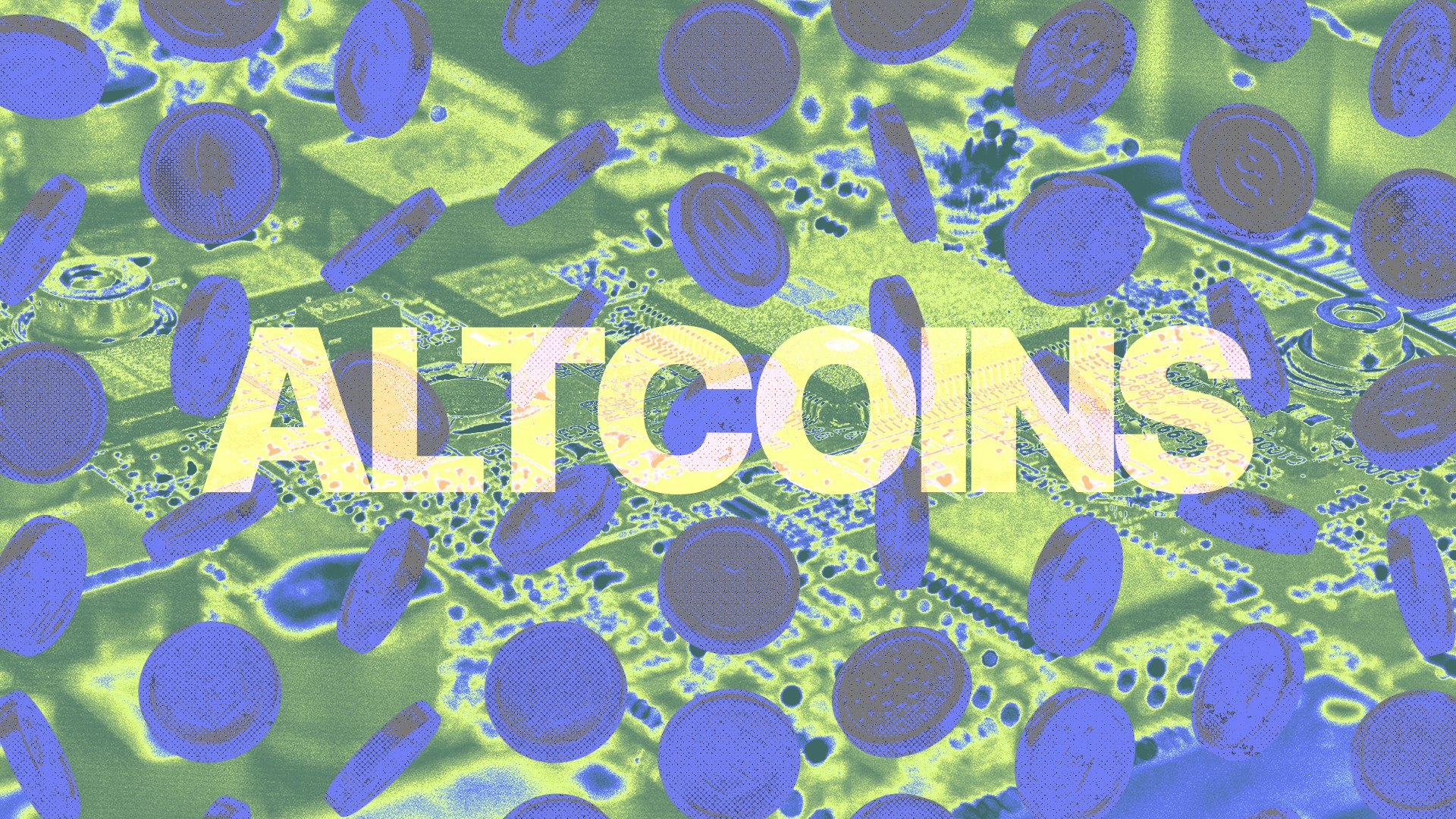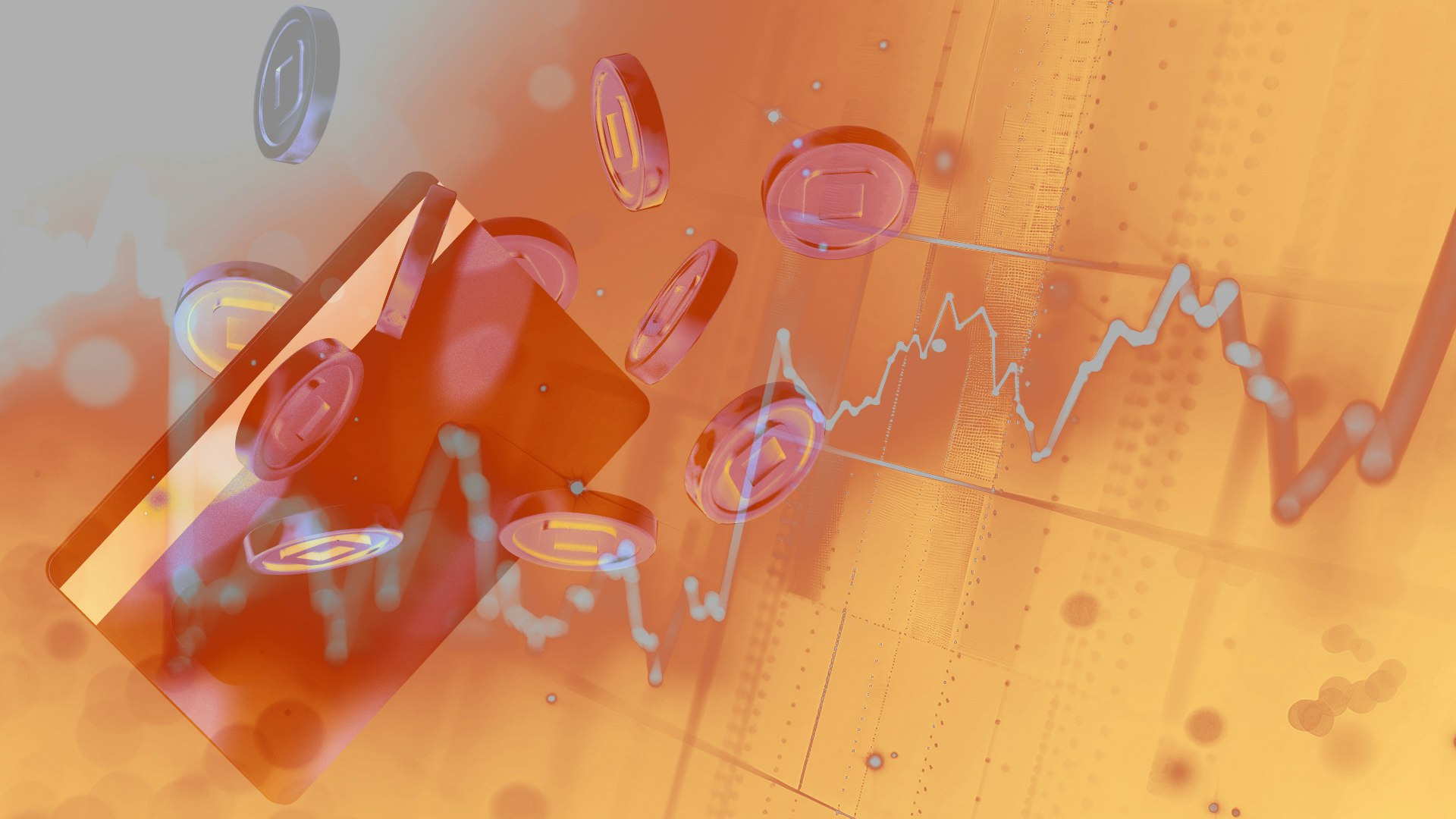Claim your free €20 Bitcoin bonus now! Just verify your ID. Weekly payouts every Friday! Don't invest unless you're prepared to lose all the money you invest. Take 2 mins to learn more.
What is Chainlink? Here are Some Answers to Common Questions
What is Chainlink? What is an Oracle? What does LINK do? Here are some answers to queries about LINK.
In this article...
- What is Chainlink?
- What is it used for?
- What is LINK?

Why do investors buy Chainlink? Chainlink’s decentralised oracle network addresses a fundamental problem in blockchain-based smart contracts. While no investment is risk-free, LINK’s strong fundamentals make it an interesting choice for those interested in DeFi and real-world data integration.
What is LINK?
LINK is a cryptocurrency and technology platform that enables non-blockchain enterprises to have protection when connecting with blockchain platforms.
It acts as middleware, connecting blockchain-based smart contracts with external data sources, such as baseball scores or stock prices.
What is an oracle?
An oracle is a critical component for smart contracts. It acts as a bridge between the blockchain and the external world.
Oracles provide accurate and up-to-date data to smart contracts, allowing them to verify conditions based on real-world information. For example, determining the price of Bitcoin on a specific date relies on an oracle.
What are decentralized oracle networks?
Decentralized oracle networks are systems that allow blockchains to interact with external data and services.
In the context of Chainlink, these oracles facilitate the protection movement of data on and off blockchains, enabling smart contracts to execute based on real-world inputs and outputs.
What are external data sources?
External data sources refer to real-world information that smart contracts need to function properly. These sources can include market prices, weather data, sports scores, and more. Chainlink’s oracles connect smart contracts to these external data feeds.
What is chain data?
Chain data refers to information stored on the blockchain itself. It includes data related to transactions, smart contracts, and other on-chain activities.
Chainlink oracles complement this by providing off-chain data, bridging the gap between the blockchain and external sources.
Did Chainlink hold an Initial Coin Offering (ICO)?
Yes, Chainlink held an initial coin offering (ICO) in 2017 to raise funds for its development.
During the ICO, LINK tokens were distributed to participants who supported the project. These tokens now play a crucial role within the Chainlink ecosystem.
Chainlink’s innovative approach to oracles has made it a vital component in the blockchain space, enabling smart contracts to interact with real-world data protectively.
If you’re interested in buying Chainlink, platforms like CoinJar offer convenient ways to acquire LINK tokens.
How does Chainlink decentralise data and computations?
Chainlink uses hybrid smart contracts to integrate on-chain code with off-chain data infrastructure.
It protects and enables computations both on and off the blockchain, supporting what it calls hybrid smart contracts and cross-chain interoperability.
What is the Chainlink decentralised oracle network?
The Chainlink decentralised oracle network is a system of nodes adhering to set protocols.
Node operators stake their LINK tokens and provide off-chain data retrieval, formatting, and computations.
This network ensures reliable data feeds, verifiable randomness, automation, and cross-blockchain interoperability.
How does Chainlink collaborate with Ethereum?
The blockchain is hosted on the Ethereum platform, which uses the proof-of-stake operating protocol.
Chainlink’s open-source nature allows anyone to view its code and contribute to the project.
Chainlink plays a crucial role in protectively connecting blockchain ecosystems with real-world data. This makes it a vital component in the rapidly evolving decentralised finance (DeFi) landscape.
What are Service Level Agreements (SLAs)?
Chainlink aims to enhance the reliability and predictability of its decentralised oracle network.
Service-level agreements (SLAs) play a crucial role in achieving this goal.
These terms may require that oracle nodes put down a security deposit that is only returned to the node if they perform according to pre-agreed-upon terms.
For example, if an oracle node delivers data on time as specified in the SLA, they would receive their security deposit back.
SLAs are essential for ensuring the reliability and integrity of data provided by Chainlink’s decentralised oracle network, benefiting various industries such as DeFi, insurance, gaming, and NFTs.
What are chain computations in Chainlink?
Chain computations refer to the ability of Chainlink to perform off-chain computations within the Chainlink decentralised oracle network.
When executing complex or resource-intensive tasks, it is often expensive to perform them directly on the blockchain.
Chainlink addresses this challenge by allowing smart contracts to request computations off-chain, leveraging external resources while maintaining security and trust.
For example, you can compute the geometric mean of numbers in a list using Chainlink decentralized oracle network (DON).
The process involves sending a request to the DON, which then performs the computation off-chain and aggregates the result, returning it to your smart contract.
Why are chain computations important?
By offloading computations to external servers, Chainlink reduces the cost of executing complex logic on the blockchain.
Chain Computations allow smart contracts to access real-world data, which is essential for various use cases like financial derivatives, insurance, and supply chain management.
This ensures that computations are performed in a protective manner by multiple nodes, maintaining the integrity of data and results.
How can developers use chain computations?
Developers can integrate chain computations into their smart contracts by interacting with Chainlink’s functions.
Whether it’s calculating averages, performing statistical analyses, or handling complex business logic, Chain computations enhance the capabilities of decentralised applications.
Chain computations empower developers to build more efficient and data-rich decentralised applications, bridging the gap between blockchain and real-world information.
Who is Ari Juels?
Ari Juels is a prominent figure in the blockchain and cryptography space. He has contributed significantly to the development of protected systems, including work related to oracles and privacy-enhancing technologies.
How to Buy Chainlink
If you’re interested in acquiring LINK tokens, follow these steps.
Choose a cryptocurrency exchange
Start by selecting a reputable exchange. One such platform is CoinJar.
Create an Account
Sign up on CoinJar or any other exchange of your choice. Verify your identity as required.
Deposit Funds
Deposit Euro into your exchange account using a bank transfer.
-Search for “LINK” and execute your purchase
-Your LINK will appear in your CoinJar account / CoinJar wallet. From here you can move it into another wallet if you prefer.
Conclusion: What is LINK?
Chainlink, co-founded by Sergey Nazarov, aims to provide a decentralized solution to the "oracle problem" that has long plagued the blockchain space.
The "oracle problem" refers to the challenge of providing external, real-world data to chain smart contracts. Since these contracts operate in isolation on the blockchain, they can't access information beyond their network.
Chainlink connects chain smart contracts to the real world via a network of decentralized Chainlink node operators. These operators fetch data from multiple sources, aiming for accuracy and reliability, and deliver it to the Ethereum blockchain and other blockchains via Chainlink smart contracts. This eliminates the risks associated with relying on a single centralized oracle.
Chainlink's native cryptocurrency, the Chainlink LINK token, is used to pay node operators for their services. Users can also earn LINK tokens by participating in the network and providing data.

Suggested Articles

ASI Merger: What is Happening With Fetch.ai (FET)?
Three AI companies have merged, but what does it mean for you?Read more
What is an Altcoin? What are Altcoins for?
The term altcoin is derived from two words: “alternative” and “coin.” It refers to any cryptocurrency other than Bitcoin. Read more
Bitcoin Mining Scam: What to Look Out For
The Bitcoin Mining Scam is a new online threat coming at us. Our compliance expert explains another sophisticated scam to look out for.Read moreBrowse by topic
Please remember past performance is not a reliable indicator of future results. Don't invest unless you're prepared to lose all the money you invest.
Due to the nature, complexity and volatility of crypto, it may be perceived to be a high-risk investment. There are no government or central bank guarantees in the event something goes wrong with your investment.
CoinJar Europe Limited (CRO 720832) is registered and supervised by the Central Bank of Ireland (Registration number C496731) for Anti-Money Laundering and Countering the Financing of Terrorism purposes only.
Your information is handled in accordance with CoinJar’s Privacy Policy.
CoinJar Europe Limited (CRO 720832) is registered and supervised by the Central Bank of Ireland (Registration number C496731) for Anti-Money Laundering and Countering the Financing of Terrorism purposes only.
Apple Pay and Apple Watch are trademarks of Apple Inc. Google Pay is a trademark of Google LLC.
This site is protected by reCAPTCHA and the Google Privacy Policy and Terms of Service apply.

